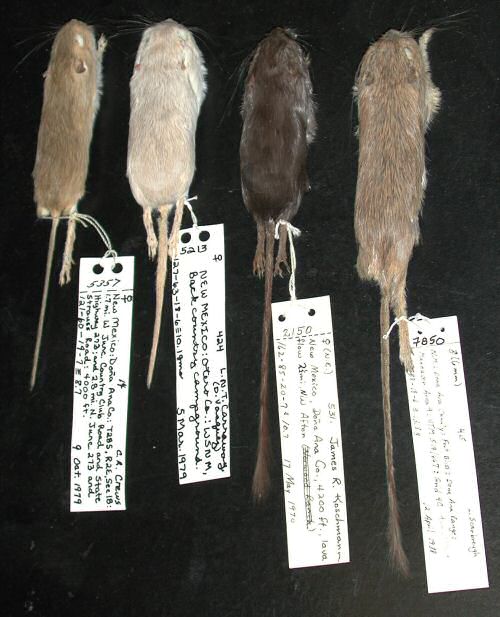

One question often ventured, even from people who really should know better, is "Why do natural history museum collections have large series of the same kind of animal or plant. Surely, a single specimen, or possibly a male and female at most, would be enough?" The answer, of course, is "Not if you want to do science"!
Put it in human terms to make the answer obvious. What male and female
could represent everything about our species, Homo sapiens? Clearly none! If you
were a Martian scientist studying humans, certainly you'd need to know about
genetic variation within a population and genetic differences between populations.
You'd need to see how individuals change with aging, from newborn to senile.
You'd need to see the age structure and sex ratios of groups. You'd need to
know the reactions to different environments. You'd like to know the degree of
interchange of genetic material between communities. Change in genetic makeup through
time would be a priority. All this and more, just to understand a species that is less
variable than most.

Contributor: Arthur H. Harris, Laboratory for Environmental Biology, Centennial Museum, University of Texas at El Paso.
Desert Diary is a joint production of the Centennial Museum and KTEP National Public Radio at the University of Texas at El Paso.

Variation within species. The two specimens on the left are Plains Pocket Mice (Perognathus flavescens); the two on the right are Rock Pocket Mice (Perognathus intermedius). Various shades between these extremes occur in nature and play meaningful roles in the natural history of these mice. The mice shown here are adapted to specific habitats, but even within local populations show variations upon which natural selection works. Laboratory for Environmental Biology specimens.